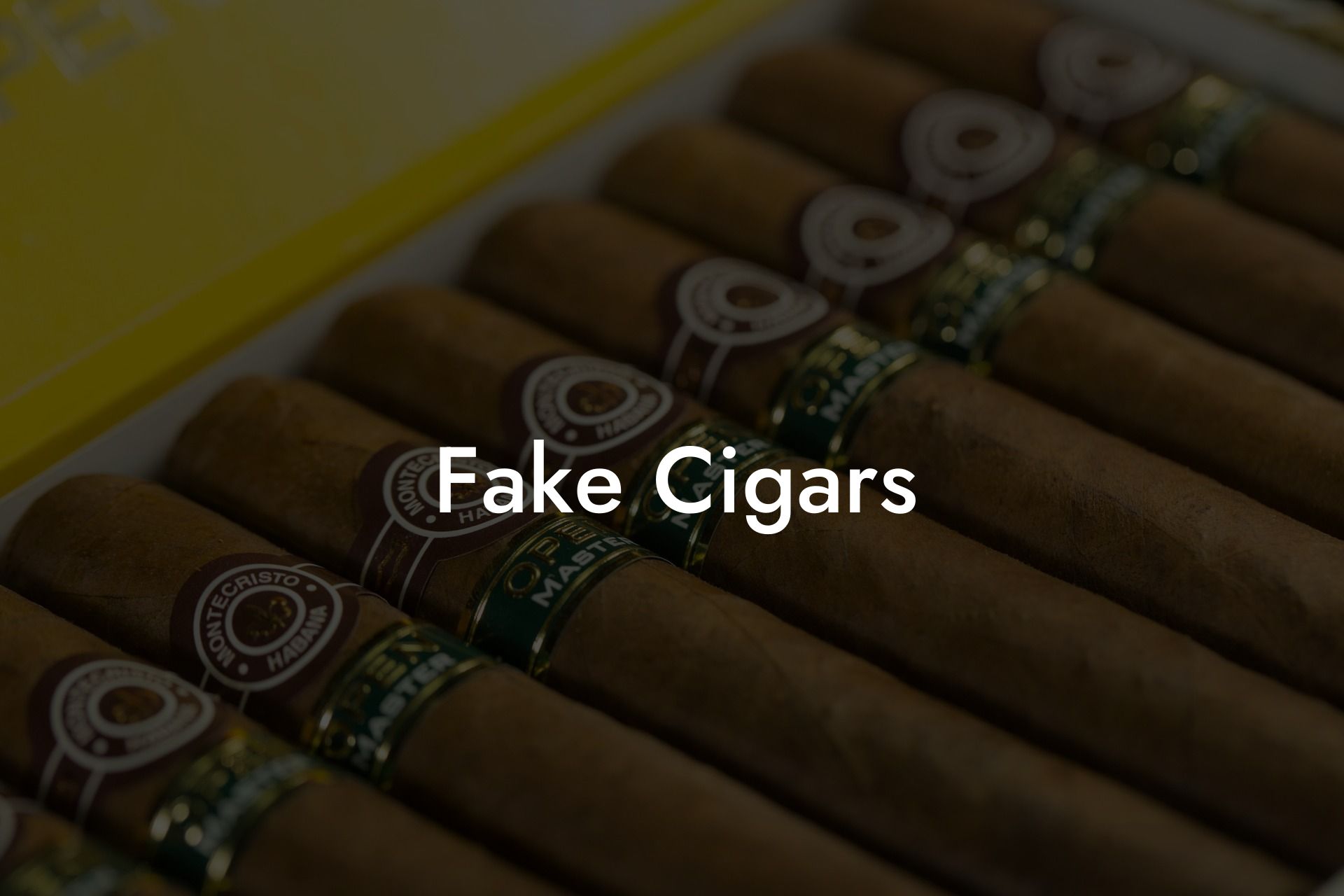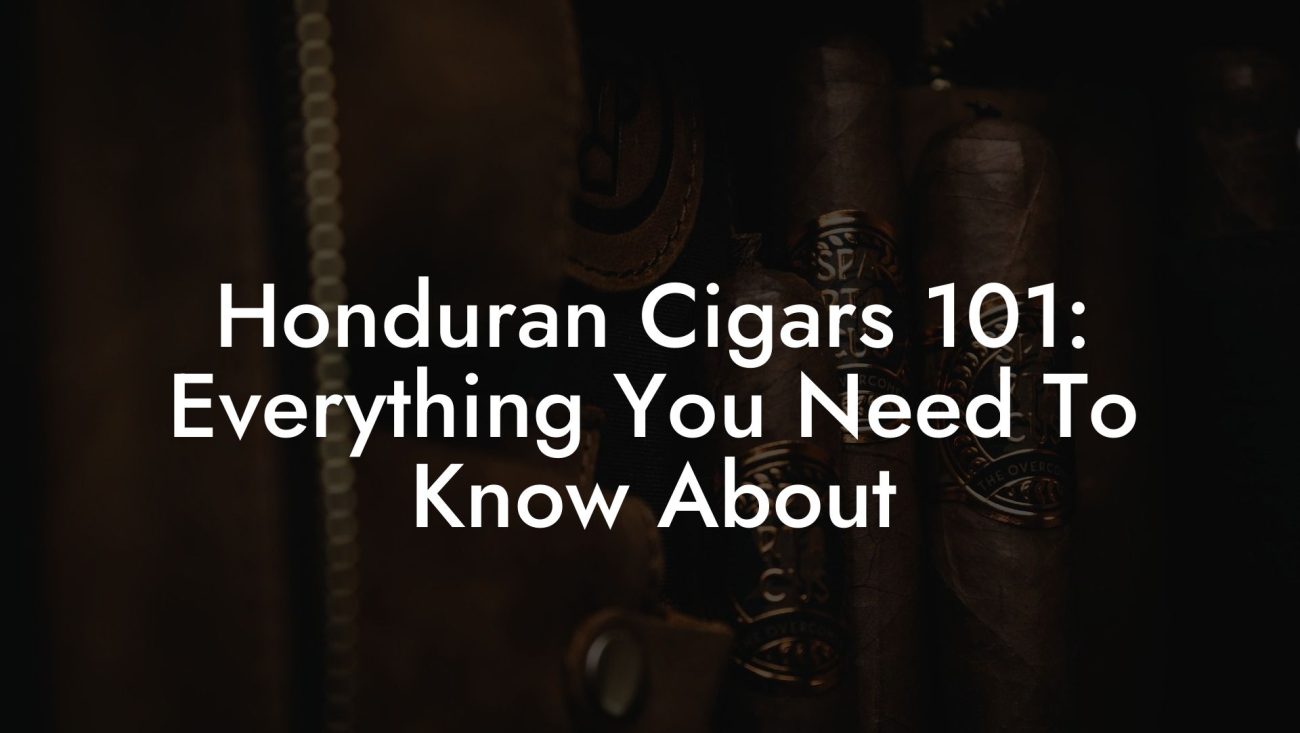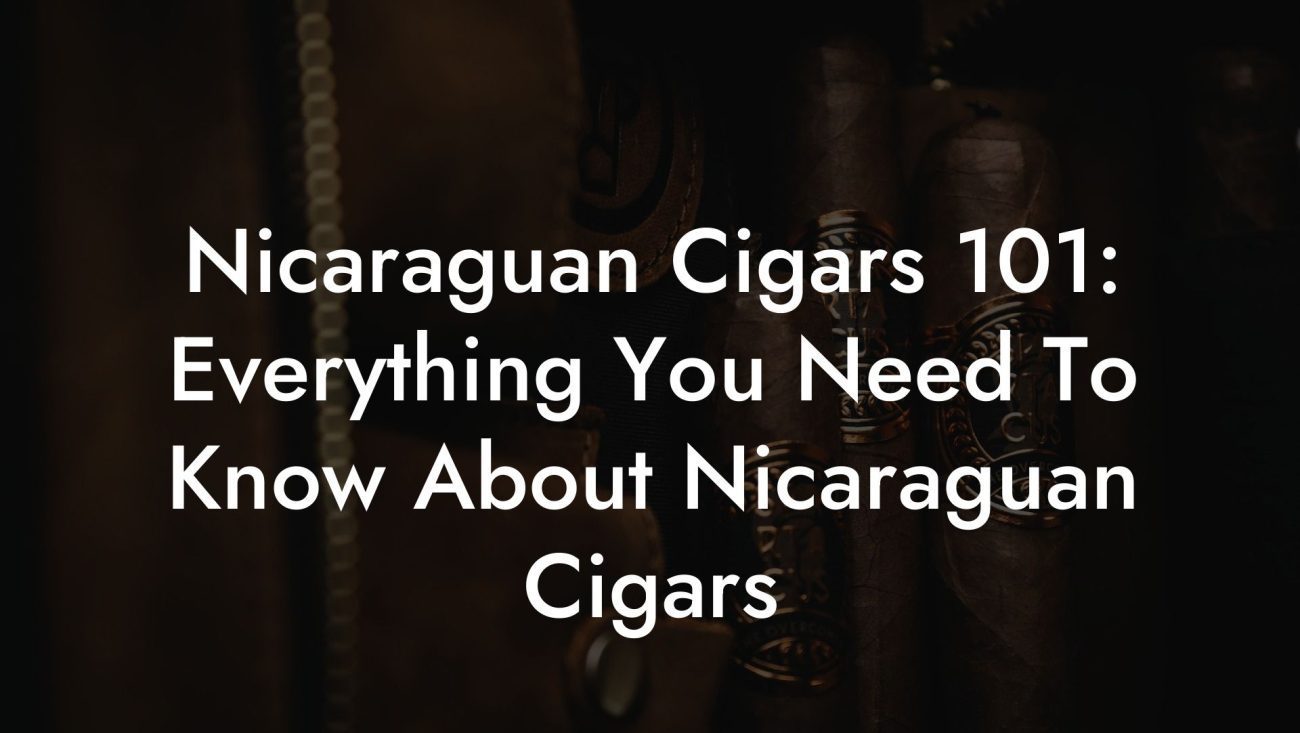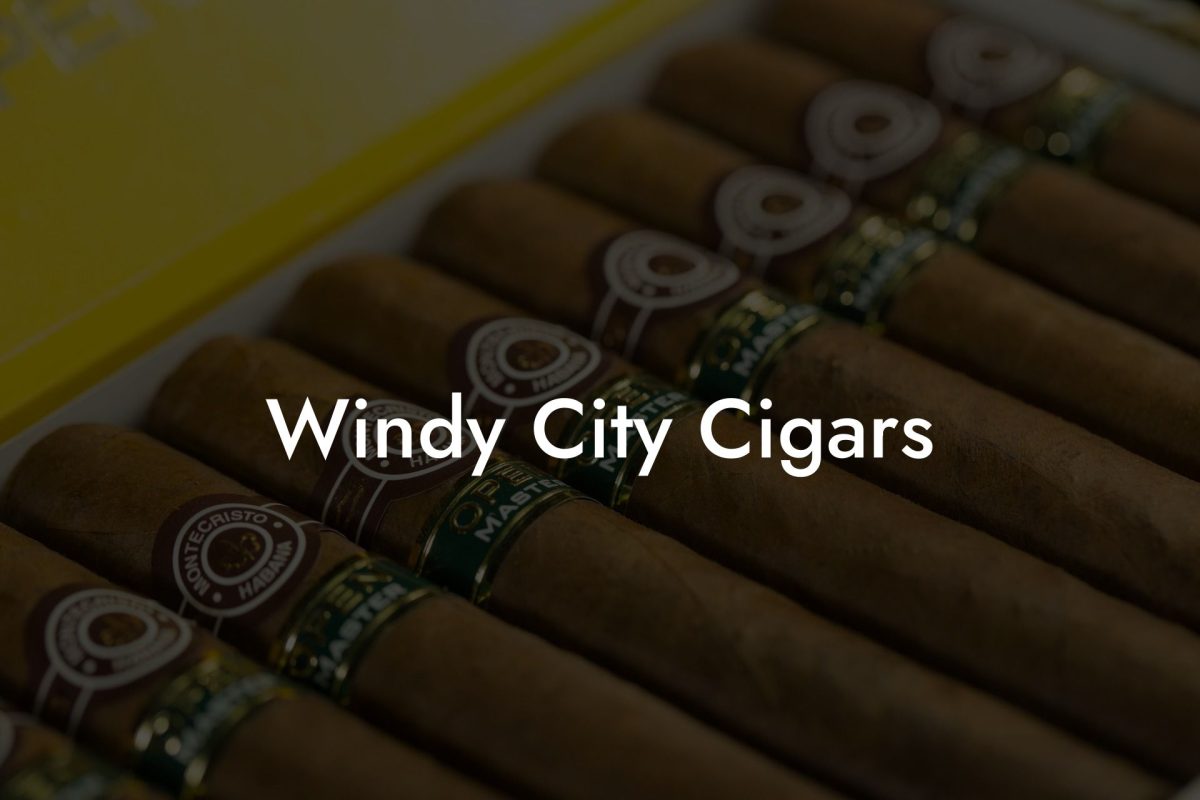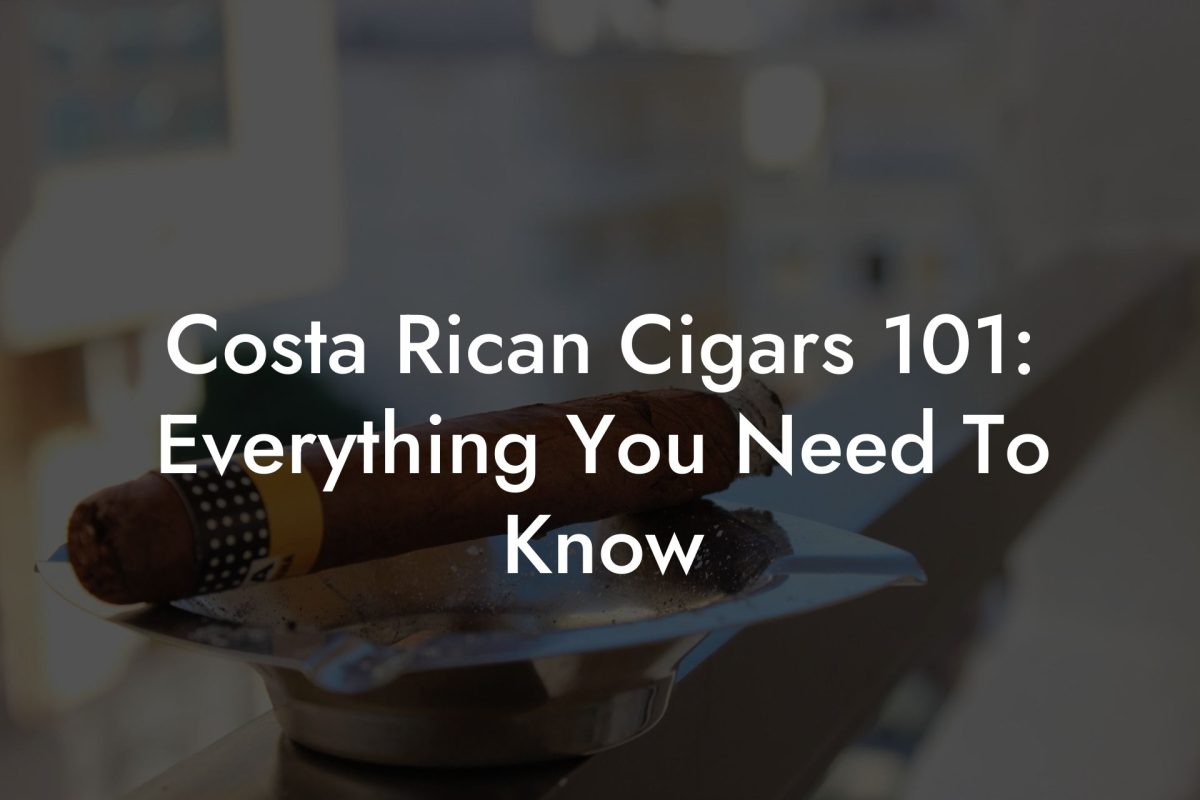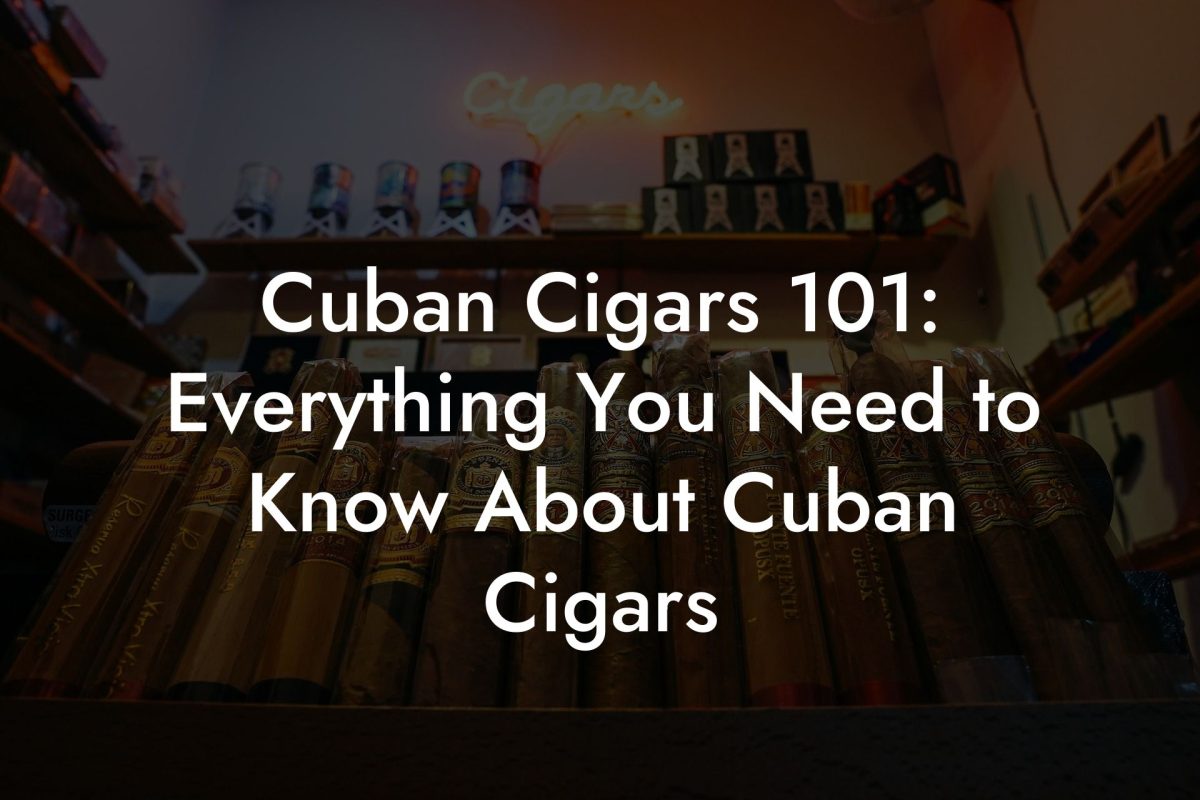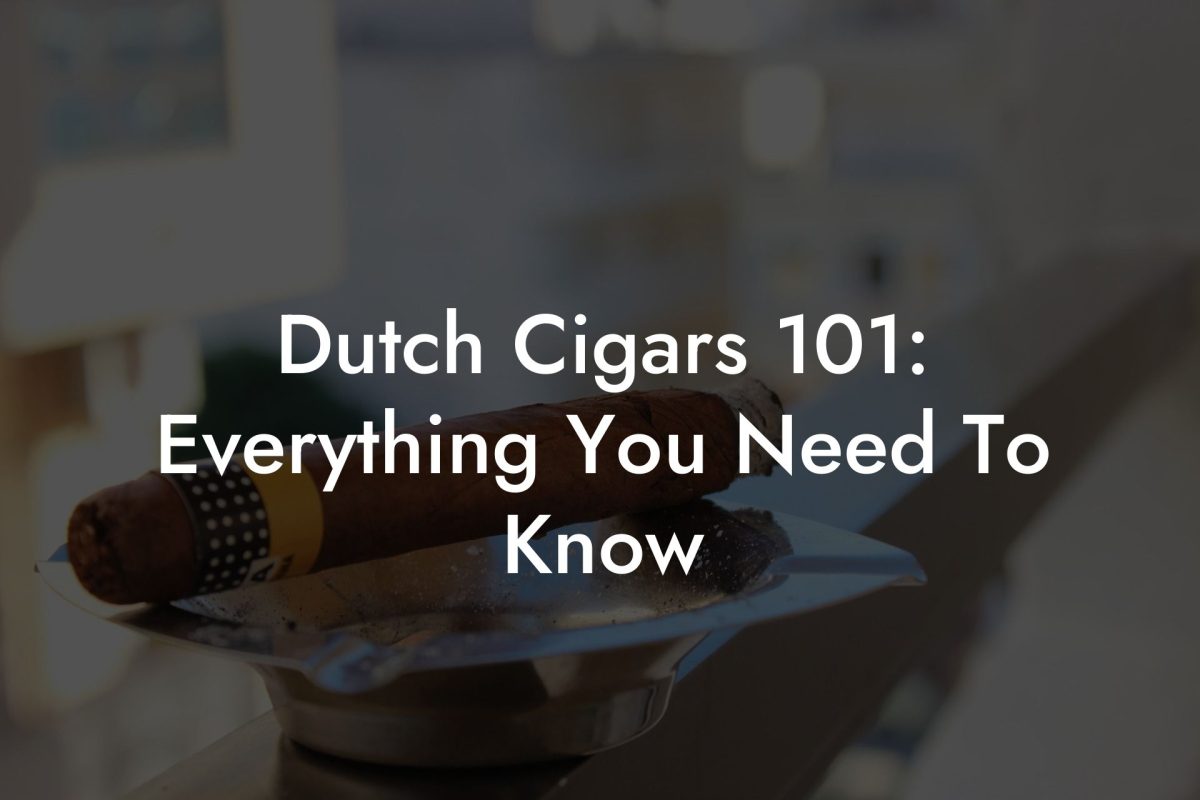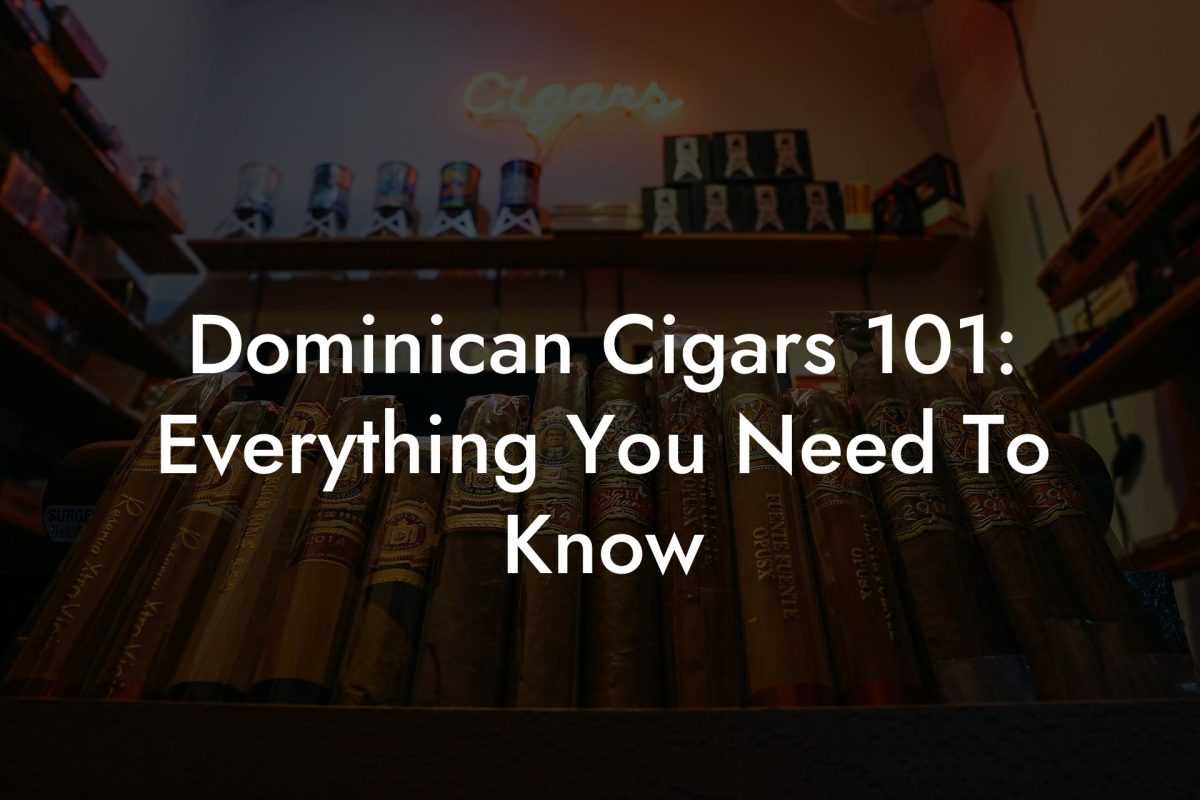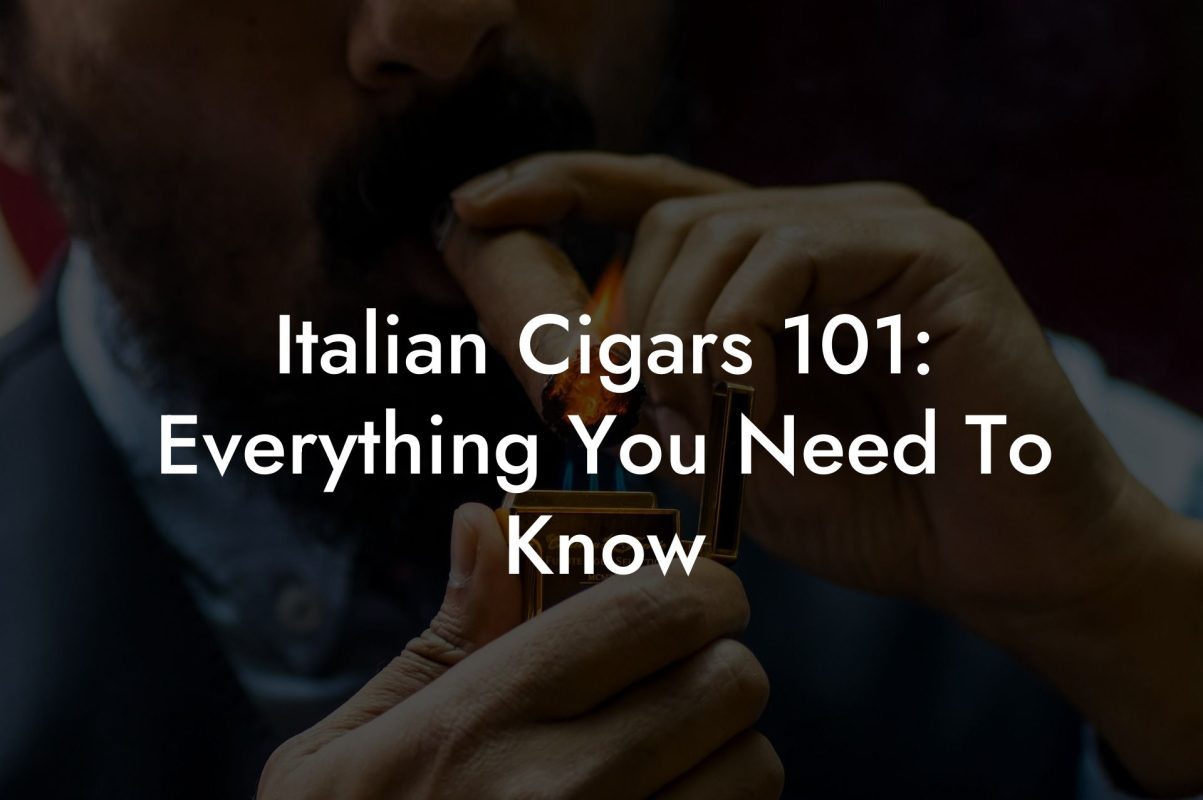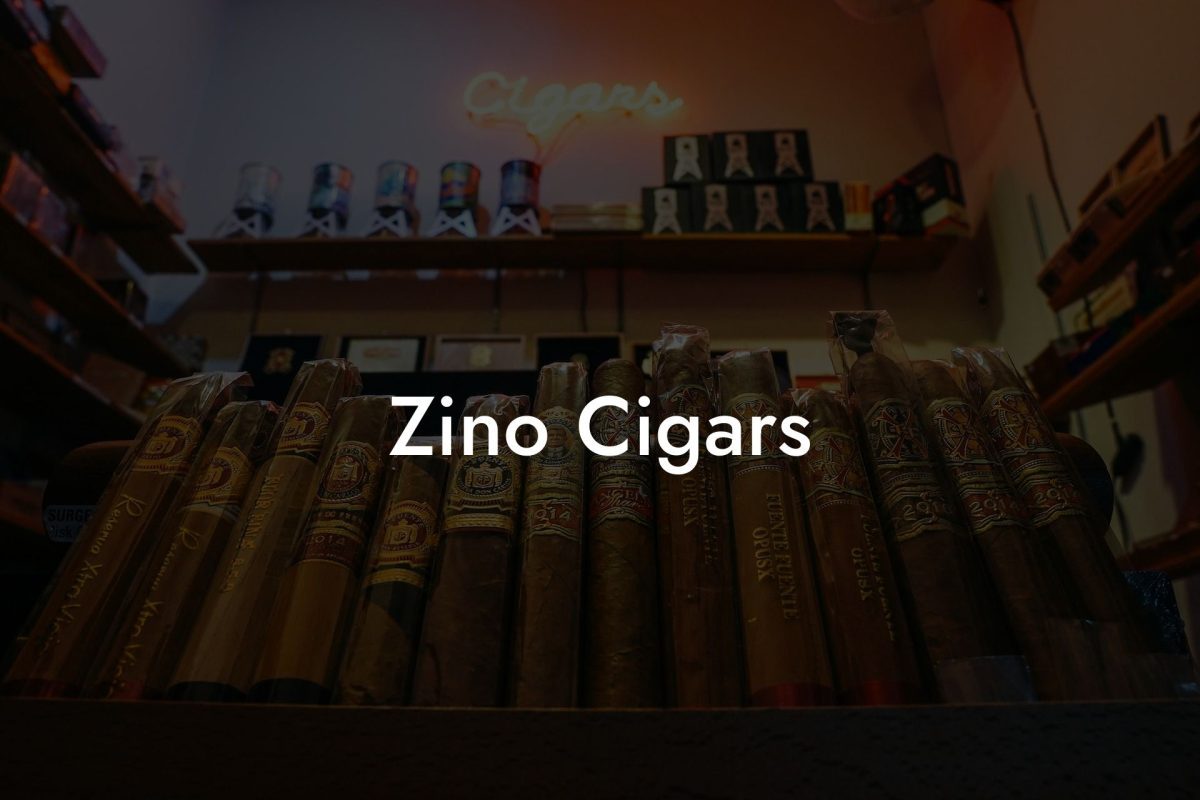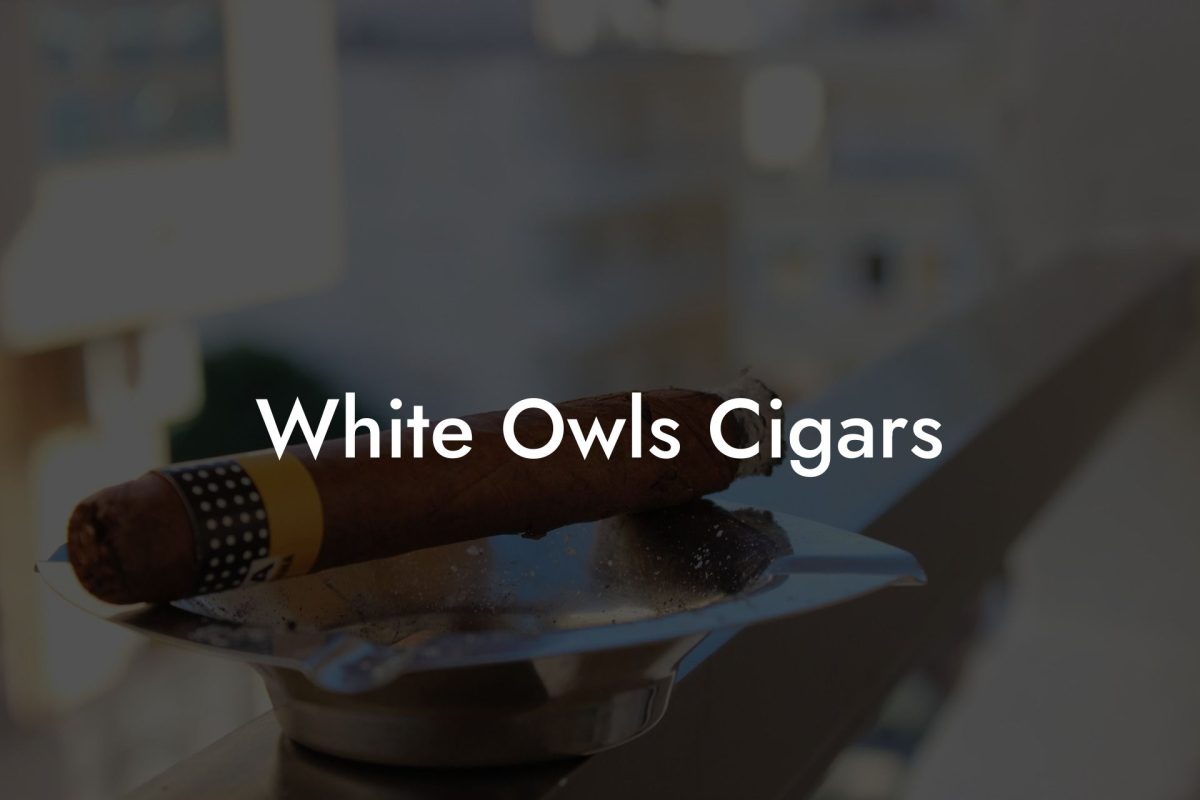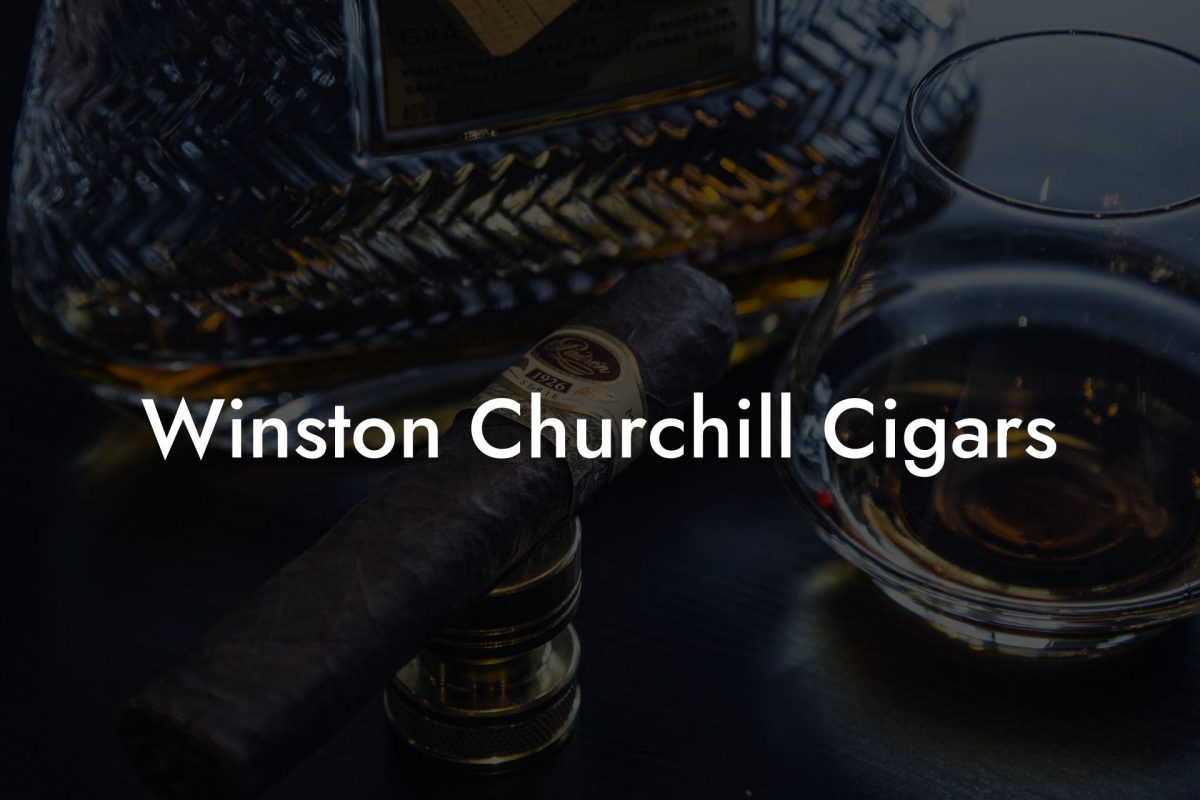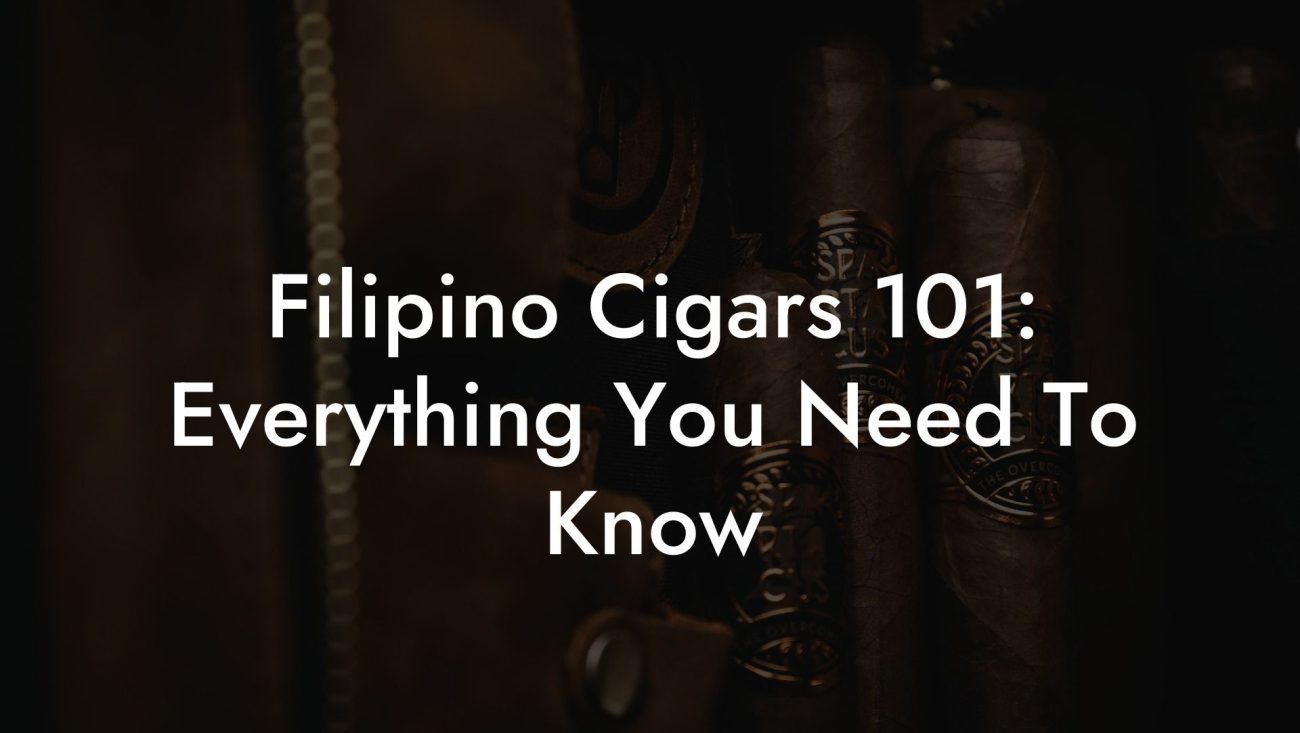There’s an undeniable allure in the world of cigars, even when they aren’t real. Picture yourself at a party where the air buzzes with cheeky energy, and someone pulls out what looks like a luxury cigar only to reveal it’s a brilliantly crafted fake. These imitation cigars are more than just prop accessories; they’re a tongue-in-cheek nod to style, sophistication, and the modern desire to have fun without taking life too seriously. Dive into the unconventional universe of fake cigars, where heritage meets hipster, and tradition is playfully reimagined for a generation that values authenticity with a wink.
Fake Cigars Table of Contents
A Brief History of Fake Cigars
The Allure of the Imitation: Why Fake Cigars Are Trending Among Millennials and Gen Z
Craftsmanship and Creativity: The Art Behind Fake Cigars
Spotting the Difference: Real vs. Fake Cigars
Fake Cigars as a Lifestyle Statement
Health, Legal, and Cultural Considerations
DIY: Crafting Your Own Fake Cigar Experience
Case Studies: How Fake Cigars Are Changing the Game
Resources and Community Support: Your Next Steps
Fake Cigars FAQs: Your Questions Answered
Embracing the Future of Cigar Culture: Your Journey with Fake Cigars
What Are Fake Cigars?
Fake cigars, sometimes known as imitation, novelty, or faux cigars, are crafted to mimic the classic look and feel of traditional cigars without using tobacco. They come in all shapes, sizes, and levels of detail, from realistic props used in film sets to artisanal creations designed purely for aesthetic pleasure. The modern consumer may choose a fake cigar for various reasons: to participate in social rituals, make a statement of ironic sophistication, or simply for the novelty of the experience.
The concept behind fake cigars plays on the cultural cachet of tobacco products while sidestepping the health risks and legal restrictions often associated with them. Whether you’re a cigar aficionado who appreciates the art and craftsmanship or a trendsetter looking for that extra dash of cool at your next social event, fake cigars offer a playful twist on the traditional cigar narrative.
In this space, we’re not just talking about cheap trinkets; we’re exploring a burgeoning subculture where design, creativity, and cheeky defiance come together to redefine what it means to “smoke” a cigar.
A Brief History of Fake Cigars
The roots of fake cigars stretch further back than you might think. Long before the age of Instagram and viral trends, imitation cigars made appearances in theater and film, serving as essential props that captured the glamour of a bygone era. In the early days of cinema, prop cigars were meticulously designed to convey wealth, power, and mystery without the complications of real tobacco.
Over the decades, as tobacco regulation tightened and health consciousness grew, the production of fake cigars took on new momentum. Designers started experimenting with materials ranging from wood and paper to modern polymers and even 3D-printed composites. The evolution of fake cigars mirrored the very changes seen in society: a move towards sustainability, a penchant for novelty, and a celebration of art over the old guard.
Today, fake cigars have transcended their humble beginnings. They’re a pop-culture staple, a form of wearable art, and an emblem of modern luxury that blends nostalgia with irony. Their journey from movie sets to mainstream bars and nightclubs speaks volumes about how tradition can be reinvented to suit contemporary tastes.
The Allure of the Imitation: Why Fake Cigars Are Trending Among Millennials and Gen Z
At first glance, cigars have an air of timeless class, steeped in rituals, history, and the mystique of smoky rooms. But if you’re a millennial or Gen Z looking for a way to express individuality while laughing at clichés, fake cigars are right up your alley. They strike the delicate balance between homage and parody.
Here’s why these ingenious imitations are captivating today’s youth:
- Irony and Authenticity: Fake cigars allow you to embrace a symbol of grandeur without endorsing its potentially harmful aspects. It’s the ultimate sartorial irony.
- Trendsetting Design: With layers of intricate details and playful embellishments, these cigars are works of art designed by forward-thinking creatives. Each piece is as unique as the person holding it.
- Social Media Gold: In an era where every accessory must tell a story, fake cigars offer that perfect blend of kitsch and class, ideal for your next Instagram or TikTok post.
- Conversation Starters: Imagine breaking the ice at a party by pulling out a cigar that’s part prop, part statement piece. It invites intrigue, questions, and plenty of laughs.
- Bolder Lifestyle Choices: They allow you to participate in a revered tradition without the health concerns of actual tobacco use, making them popular among health-conscious trendsetters.
In a nutshell, fake cigars are more than just imitation items, they’re lifestyle microcosms that signal an embrace of playful sophistication and forward-thinking design.
Craftsmanship and Creativity: The Art Behind Fake Cigars
The production of fake cigars is a labor of love steeped in artistic innovation. Gone are the days of mass-produced knockoffs; the current generation of fake cigar creators are artisans who blend traditional craftsmanship with modern techniques.
From hand-rolled details that replicate the intricate textures of real cigars to the use of exotic materials and bold colors, each fake cigar tells a story. Designers work closely with artisans to ensure that every element, from the binders and wrappers to the embossed logos, is meticulously crafted to evoke authenticity while remaining unmistakably playful.
Some creators even go so far as to incorporate elements of mixed media, combining traditional materials with digital enhancements. The result? A product that is as much a statement piece as it is a conversation starter. This marriage of classic design and contemporary artistry is a major draw, especially for those who cherish the blend of old-world charm and modern rebellion.
In essence, fake cigars are magnificently paradoxical, infused with an appreciation for the rich heritage of the cigar world, yet brimming with the spirit of innovation and satire that defines today’s youth.
Spotting the Difference: Real vs. Fake Cigars
While fake cigars are crafted to closely resemble the real deal, there are a few telltale signs that help you differentiate between a genuine tobacco masterpiece and its imitation counterpart. Understanding these nuances not only enhances your appreciation for the art but also sharpens your ability to make informed lifestyle choices.
Material and Texture
Authentic cigars are made from carefully cured and fermented tobacco leaves, resulting in a texture and aroma that are hard to replicate naturally. Fake cigars might use alternative materials such as herbal compounds, paper, or even recycled materials, which can slightly alter the overall weight and feel.
Aroma and Flavor
The true test of a real cigar is in its aroma. Genuine tobacco emits a complex bouquet that unfolds over time. Fake cigars, while they can be treated with flavor infusions or scented oils to mimic this experience, often fall short of the authentic olfactory journey.
Visual Details
Examine the wrapper closely. Real cigars exhibit natural imperfections and unique variegations in color, each leaf is slightly different. Fake cigars, on the other hand, frequently boast uniformity that can appear too perfect. Enticing patterns, detailed embossing, or even humorous, intentionally incongruent branding might be a sign that you’re holding an imitation.
Price and Packaging
Luxury real cigars often carry a hefty price tag as a reflection of their craftsmanship and heritage. In contrast, fake cigars are typically sold at lower prices or as collector’s items for novelty purposes. Packaging may also include playful disclaimers or creative designs that hint at a non-tobacco origin.
These distinctions help maintain the playful boundary between authenticity and imitation in the world of cigar culture.
Fake Cigars as a Lifestyle Statement
In today’s society, the way you present yourself speaks volumes. Fake cigars have evolved into a cultural symbol, a quirky badge of honor for those who appreciate tradition but aren’t afraid to twist it to suit a modern, edgy aesthetic.
Imagine attending an exclusive rooftop event where the conversation flows freely, and the air is filled with a mix of genuine laughter and the clink of craft cocktails. In one corner, an effortlessly cool individual casually lights up a fake cigar, sparking curiosity and envy in equal measure. This is not about indulgence but about style, intellect, and a touch of rebellion against the norms.
For many, fake cigars have become a prop for Instagram stories, a humorous nod in themed parties, and a collectible conversation piece. They symbolize an embrace of satire, a celebration of creative liberties, and a rejection of outdated notions of what it means to be “sophisticated.”
The rise of fake cigars parallels a broader cultural shift, a move towards playful self-expression, where authenticity is measured not by adhering to tradition, but by reinterpreting it for a new generation.
Health, Legal, and Cultural Considerations
When it comes to cigars, the phrase “smoke and mirrors” takes on a whole new meaning. While real cigars are associated with health risks and strict legal regulations, fake cigars navigate a much friendlier landscape. They allow you to participate in the cultural ritual of cigar smoking without the underlying health concerns. That said, it’s important to keep in mind a few considerations:
Health and Wellness
Because fake cigars are free of tobacco and its hazardous chemicals, they offer a guilt-free alternative for those who want to enjoy the ambiance without compromising their wellness. However, if they’re treated with flavorings or other additives, it’s wise to check for any allergies or sensitivities. After all, fun should never come at the cost of your health.
Legal Landscape
The legal framework surrounding fake cigars is considerably less restrictive than for tobacco products. This leniency has sparked innovation and global distribution, providing enthusiasts with access to a wide variety of non-tobacco cigar options. Always be sure to verify local regulations, especially if you’re planning to import or resell these novelty items.
Cultural Impact
Fake cigars reflect a broader cultural reaction to the modern world’s contradictions. They engage with the ritualistic allure of traditional cigar smoking while also poking fun at the elitism and health implications traditionally associated with it. In many ways, they embody the spirit of modernity: embracing change, celebrating irony, and daring to redefine what sophistication means in a constantly evolving cultural landscape.
Whether you’re a collector, a trendsetter, or simply someone who appreciates a bit of playful subversion, fake cigars allow you to partake in an enduring tradition, one that’s been rebooted for the digital age and our health-conscious, socially connected society.
DIY: Crafting Your Own Fake Cigar Experience
Not all aficionados want to wait for artisanal creations to hit the shelves. For those with a creative spark and a penchant for DIY projects, crafting your own fake cigar can be an immensely rewarding endeavor. This isn’t just about assembling a prop, it’s about expressing your unique flair and perhaps even starting a trend.
Here are some tips to help you get started on your very own fake cigar masterpiece:
Gather Your Materials
Start with basic supplies such as paper, fabric, or even recycled cigarette rolling papers. If you’re feeling extra adventurous, check out local craft stores for textured materials that can simulate the look of aged tobacco leaves.
Design with a Twist
Use markers, stamps, or embossing tools to create intricate patterns that mimic the natural imperfections of a real cigar wrapper. Don’t be afraid to experiment with color and texture, after all, you’re creating something that straddles the line between authentic homage and playful parody.
Add Personal Flair
Whether it’s a custom logo, a cheeky slogan, or hand-painted details that nod to your personal style, infusing your work with your own personality is essential. Your creation doesn’t have to be perfect; it should be an extension of your individuality.
Share and Connect
Once you’ve crafted your masterpiece, don’t keep it to yourself. Share your creation on social media with relevant hashtags like #FakeCigars, #CigarCulture, or #NoveltyCigars. You might inspire others to join the movement and showcase the endless possibilities of creativity.
Crafting your own fake cigar isn’t just a hobby, it’s a way to participate in a growing cultural trend that blends tradition, art, and a healthy dash of irreverence.
Case Studies: How Fake Cigars Are Changing the Game
To really grasp the impact of fake cigars, it helps to look at real-life examples of how individuals and communities have embraced this trend. These case studies showcase the inventive spirit behind fake cigars and the myriad ways they’re making waves across social circles.
Case Study 1: The Art Gallery Pop-Up Experience
At a recent pop-up art gallery in downtown Los Angeles, visitors were greeted by a vibrant display of handcrafted fake cigars. The exhibit, titled “Smoke Signals,” featured works by local artists who had reimagined the traditional cigar through modern design principles. Not only did the exhibit spark conversations about art and identity, but it also served as a platform for emerging talents to showcase their craftsmanship. Visitors left with a newfound appreciation for the artistry behind a seemingly simple object, and the exhibit quickly became a viral hit on social media.
Case Study 2: A Night Out with a Twist
In New York City, a trendy speakeasy decided to mix things up by offering fake cigars as part of its signature cocktail presentation. Guests were provided with a choice of faux cigars each evening, leading to an unexpectedly delightful fusion of classic cigar culture and innovative mixology. The manager explained, “Our patrons love the irony, we’re giving them a taste of old-school glamour without any of the baggage.” The initiative not only increased foot traffic but also sparked nationwide discussions about what constitutes luxury in the modern era.
Case Study 3: Social Media: The Rise of the #FakeCigars Movement
On platforms like Instagram and TikTok, enthusiasts from all over the globe have taken to showcasing their fake cigar collections and DIY projects under the hashtag #FakeCigars. One viral video, featuring a group of young creatives humorously debating the merits of various imitation brands, racked up millions of views within days. This digital rally cry has resulted in a community where aficionados exchange tips, collaborate on creative projects, and even organize meetups, cementing fake cigars as a legitimate cultural phenomenon.
These case studies illustrate that fake cigars are more than just novelty items; they’re a dynamic force reshaping how we engage with luxury, art, and social expression.
Resources and Community Support: Your Next Steps
Ready to immerse yourself in the world of fake cigars? Whether you’re eyeing a collectible piece, planning a DIY project, or simply seeking to understand the cultural significance, there are plenty of resources available. Join online communities, follow influential creators on social media, and attend events that celebrate the fusion of art and tradition.
Explore specialty boutiques and independent artisans who design limited-edition fake cigars, and subscribe to blogs and vlogs that dive deep into their evolution. These platforms not only offer fresh ideas and inspiration but also provide invaluable support as you navigate the ins and outs of this booming trend.
For those interested in hands-on experiences, consider signing up for workshops or creative meetups where you can learn from experts in the field. Whether it’s crafting your own fake cigar or joining a tasting event (sans tobacco), the community is vibrant, engaged, and eager to share knowledge.
Your next steps are simple: immerse yourself in a culture that values creativity, self-expression, and humor. The world of fake cigars is waiting to be explored, one unique creation at a time.
Fake Cigars FAQs: Your Questions Answered
Discover answers to some of the most frequently asked questions about fake cigars, their role in modern culture, and what makes them the ultimate accessory for today’s discerning yet playful individuals.
1. What exactly is a fake cigar?
A fake cigar is a non-tobacco, imitation cigar designed to mimic the appearance and feel of a traditional cigar. These novelty items are crafted for artistic expression, social commentary, or simply for fun.
2. Why would someone choose a fake cigar over a real one?
Fake cigars offer a playful approach to the traditional cigar culture. They allow individuals to enjoy the aesthetic and social aspects of cigar smoking without the health risks or legal constraints associated with tobacco.
3. Are fake cigars used in movies and theater?
Yes, fake cigars have long been used as props in film, television, and theater. They help maintain authenticity in period pieces or stylized settings without the complications of using real tobacco products.
4. How can I distinguish a fake cigar from a real one?
Look for differences in material, texture, aroma, and packaging. Real cigars will have subtle imperfections, a natural tobacco scent, and typically come with higher price tags. Fake cigars often feature uniformity in color and design, with creative or humorous details that hint at their non-tobacco origins.
5. Can fake cigars be customized or made at home?
Absolutely. Many enthusiasts enjoy DIY projects to craft their own fake cigars, using various materials and creative techniques to design a piece that reflects their unique style.
6. What role do fake cigars play in modern social culture?
Fake cigars have evolved into a symbol of playful sophistication and creative rebellion. They are used to make a statement at social events, serve as conversation starters on social media, and sometimes even act as collectible items among enthusiasts.
7. Are there any health concerns associated with fake cigars?
Since fake cigars do not contain tobacco or harmful additives, they offer a risk-free alternative for those who want to enjoy the ritual of cigar smoking without negative health implications.
8. Where can I find reputable fake cigar creators or retailers?
Many independent artisans, specialty boutiques, and online platforms cater to the fake cigar market. Research community forums, social media groups, and trusted blogs to find creators and retailers who maintain high standards of craftsmanship.
Embracing the Future of Cigar Culture: Your Journey with Fake Cigars
The modern world craves originality, irreverence, and style that defies expectations. Fake cigars encapsulate that spirit perfectly, melding the timeless appeal of cigar aesthetics with bold, contemporary attitudes. They remind us that enjoyment and expression can adopt many forms, and that sometimes, the most striking statements come from things that are not as they seem.
Whether you’re hosting an event, adding a quirky accessory to your wardrobe, or simply seeking a topic to ignite conversation, fake cigars offer endless possibilities. Their playful design, cultural significance, and creative potential ensure they remain a topic of both admiration and amusement.
As you venture into this vibrant subculture, remember that each fake cigar is more than just a replica, it’s an invitation to reimagine tradition, celebrate creativity, and confidently explore the intersection where heritage meets modernity. Embrace the journey, share your passion with others, and let your playful rebellion pave the way for a renewed appreciation of style, art, and community.
Your journey with fake cigars is just beginning. Whether you choose to collect them, create your own, or simply observe and appreciate, you’re joining a community that values humor, innovation, and the freedom to redefine luxury in ways that are uniquely your own.
So go ahead, light up your imagination, puff on a fake cigar of your own design, and toast to a future where authenticity is measured not by adherence to norms, but by the courage to be delightfully different.

